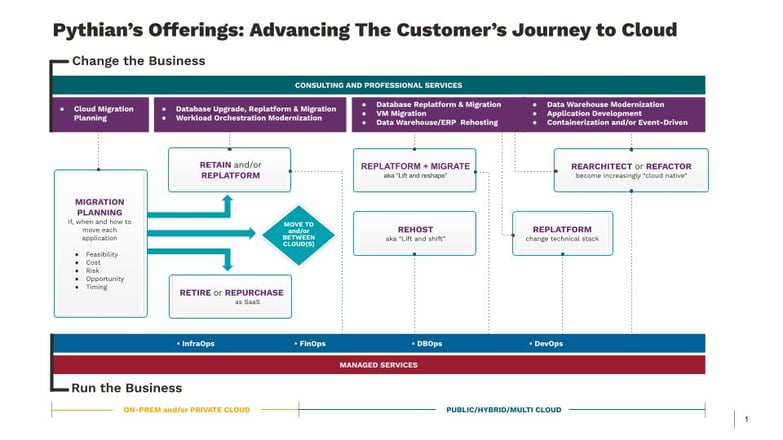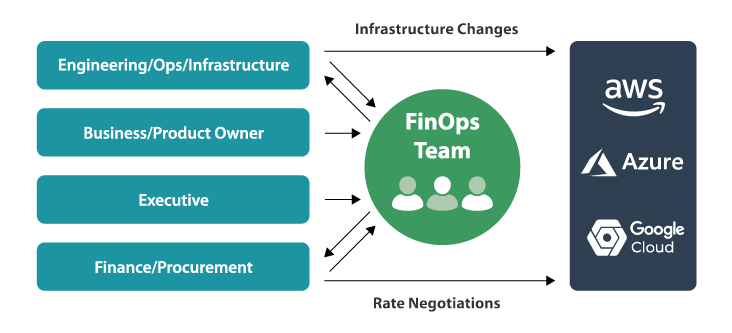What Is FinOps? Part One: A Crash Course in Cloud Cost Optimization
FinOps is also known as cloud cost optimization. Today we discuss the importance and characteristics of managing cloud spend along with its business justifications and implications for your organization. This is the first of three posts in a series.
Along with changing organizations technically, the cloud has affected nearly every facet of IT financial management.
As cloud spend becomes a more significant part of IT budgets, its implications on cost controls and long-term planning are beginning to become clear. According to Gartner, many enterprises spend an average of 30 to 40 percent too much on cloud services.
That’s significant waste for any organization. It’s also why FinOps has quickly become a must-have for getting cloud spending under control.
What is FinOps?
As organizations evolve, their cloud maturity and data estates become more complex. Tracking and optimizing dozens of cloud resource purchases from all over the organization become increasingly difficult. It’s also more likely that cloud assets will go unutilized. Further, predicting and allocating cloud costs is nearly impossible under traditional IT financial management because cloud usage is on demand. Therefore, negotiating prices becomes far more challenging.
So what exactly does that mean for your business?
FinOps helps organizations better manage cloud costs. It enables full visibility of cloud spend through analytics, continuous optimization of resources and business unit collaboration across the enterprise. The not-for-profit trade association FinOps Foundation defines FinOps as “the practice of bringing financial accountability to the variable spend model of cloud, enabling distributed teams to make business trade-offs between speed, cost, and quality.”
Because FinOps involves cross-functional teams, it encourages cloud cost ownership among individual business units—not just IT. It also encourages a culture of accountability regarding cloud spend across the enterprise.
Under FinOps principles, optimized costs don’t mean degraded capabilities, just the opposite. FinOps helps remove blocks to development and enables organizations to move faster, drive revenue, understand customers better and save money on infrastructure.
The four key pillars of FinOps
A robust FinOps strategy and approach helps ensure the highest possible revenue potential by maximizing your cloud investment’s value.
The four core philosophies of Pythian’s FinOps practice include the following:
- Visibility: On-demand availability of reports, charts and diagrams to help stakeholders view all relevant metrics and their interrelation in close to real time
- Interpretation: Provisioning of tools and/or personnel that enhance your ability to understand, apply and use metrics to add value
- Action: Quickly, safely and non-disruptively enacting any desired changes to optimize costs
- Governance: Proactively monitoring and automatically enforcing thresholds, budgets, standards and regulations on the part of government or industry bodies
The FinOps Foundation also lists several important principles of FinOps. These include:
- the importance of cross-team collaboration
- individual accountability and ownership over cloud usage
- a centralized team to help drive FinOps tools and processes
- accessible and timely reporting
- cost optimization through cloud instance rightsizing and benchmarking
But FinOps isn’t just a switch you can flick. It requires significant organizational shifts and commitment in a number of areas.
What organizational shifts are required?
FinOps requires fundamental shifts in three core areas of the cloud life cycle: Planning, architecture and operations.
- Planning: Forecasting expected cloud usage, setting appropriate cloud budgets, and strategically tracking cloud consumption and purchasing
- Architecture: Designing and implementing cost-efficient cloud services that meet workload requirements and usage patterns and can scale to meet future growth
- Operations: Committing to ongoing monitoring, reporting, tuning and adjusting cloud services based on cost and usage requirements
Perhaps more important than the three core areas, however, are the necessary simultaneous cultural shifts in technology and processes. Teams from across the organization must work closely on optimizing cloud spend while incorporating new processes around variable usage, ongoing monitoring and continuous planning and improvement.
Those big shifts are necessary as cloud usage grows within the enterprise and usage fluctuations drive considerable cost volatility. Cloud’s variable cost structure means any growth in the business usually results in higher costs, making accurate forecasting difficult without close collaboration.
Everyone has a role to play in FinOps
Everyone must be involved in the cultural shift inherent with FinOps.
Image credit: FinOps Foundation
The above diagram from the FinOps Foundation shows how the FinOps model is underpinned by a cross-functional team—christened by Gartner as a Cloud Cost Center of Excellence (CCoE)—that works with cloud providers and the rest of the organization to manage your cloud spend, strategy and governance.
As a market leader, Pythian’s FinOps has been integral to the cloud cost optimization strategy of dozens of large enterprises. Contact a sales representative today to learn how to save an average of 25 percent in your monthly cloud spend.

Be sure to read the other posts in this series:
- Part Two: Why FinOps Is Essential for Cloud Strategy Planning (coming soon)
- Part Three: FinOps at the Center of Your Cloud Strategy (coming soon)
Share this
You May Also Like
These Related Stories
Why FinOps Is Essential for Cloud Strategy Planning
How FinOps Procurement and Optimization Strategies Can Create Value for Your Organization


No Comments Yet
Let us know what you think